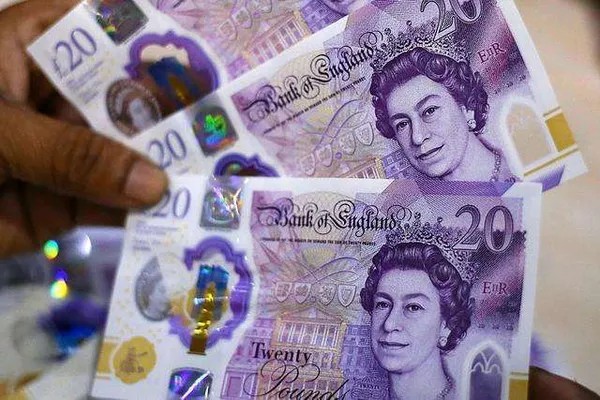Pound Sterling (GBP) faced a retreat as disappointing wage data cast a shadow over the outlook for consumer spending, potentially influencing the Bank of England’s (BOE) monetary policy decision in November. The GBP/USD currency pair also struggled, grappling with the repercussions of surging energy prices, which could stoke inflationary pressures in the UK.
Sterling’s attempt to breach the key 1.2200 resistance level was met with resistance as UK wage data turned out weaker than anticipated. Average earnings, excluding bonuses, eased to 7.8% in the three months through August, aligning with expectations and a slight drop from the previously reported 7.9%. During the same period, average earnings, including bonuses, declined to 8.1% from the consensus estimate of 8.3% and the previous figure of 8.5%.
This lackluster wage data raises concerns about consumer spending, a pivotal driver of the UK economy. Employment figures were initially scheduled for release, but they have been delayed to October 24 due to the LFS survey’s delay in reaching a larger number of respondents, as reported by the Office for National Statistics (ONS).
Investors will now turn their attention to September’s inflation data, which will significantly impact the Bank of England’s future policy decisions. The UK’s inflation rate surpasses that of other G7 economies, making further softening in consumer inflation a potential relief for BOE policymakers.
There is a sense of uncertainty among investors about whether the central bank will prioritize supporting the economic outlook or adhere to its mandate of curbing inflation to 2%. A slowdown in the return to 2% inflation could prompt Bank of England policymakers to consider raising interest rates by another 25 basis points (bps) to 5.50%.
Any successful interest rate hike by the Bank of England could result in policy disparities between the Federal Reserve and the Bank of England, potentially setting the stage for a standoff.
Huw Pill, the Bank of England’s chief economist, emphasized the importance of maintaining high interest rates to combat inflation. He further stated that future rate decisions would be “delicately balanced,” indicating a willingness for further tightening.
The Bank of England’s monetary policy rate decision in November could also be influenced by the ongoing Israeli-Palestinian conflict, with potential disruptions to supply chains and a knock-on effect of higher oil prices contributing to sustained headline inflation.
Amid these uncertainties, market sentiment remains cautious as the Israel-Hamas conflict escalates, with Israel launching a ground offensive in Gaza. This escalation could draw additional Middle Eastern countries into the conflict.
Furthermore, U.S. President Joe Biden’s upcoming visit to Israel on Wednesday to meet Prime Minister Benjamin Netanyahu is closely monitored, particularly as he addresses the ongoing attacks from the Palestinians.
In the currency markets, the U.S. Dollar Index (DXY) found support near 106.20 after retracing from a one-week high of 106.80 amid cautious market sentiment. Investors are awaiting a speech by Federal Reserve Chairman Jerome Powell, scheduled for October 19 at the Economic Club of New York, which is expected to provide insights into the monetary policy framework for November, along with the inflation and economic outlook.
Technical Analysis: GBP Under Selling Pressure Around 1.2200
Weak wage data has put the GBP under selling pressure around the 1.2200 mark. The GBP/USD pair exhibited range-bound trading on Monday as investors await UK inflation data. In the short-term and on a broader scale, the outlook for GBP/USD appears bearish as it trades below the 20-day exponential moving average (EMA), and a death cross has formed between the 50-day and 200-day EMAs. GBP/USD may face a decline toward the psychological support level at 1.2000.


